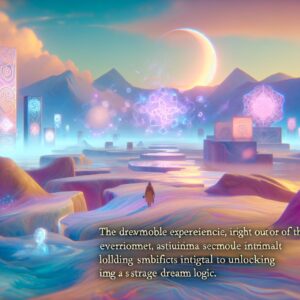Introduction:
“The Dream Machine” is a game that has captivated players with its unique blend of storytelling, handcrafted visuals, and mind-bending puzzles. Developed by Cockroach Inc., this indie point-and-click adventure game has a fascinating history that showcases the dedication and creativity of its developers. In this blog post, we delve into the intriguing story behind “The Dream Machine” and trace its evolution through gaming history.

- Inception and Early Development:
The roots of “The Dream Machine” can be traced back to the early 2000s when the project was first conceptualized by developers Erik Zaring and Anders Gustafsson. Inspired by classic adventure games and the desire to create a unique and immersive experience, the duo embarked on the ambitious task of bringing their vision to life. They chose a distinct approach by utilizing clay and other tangible materials to craft the game’s visuals, setting it apart from traditional pixel art or 3D graphics.
- Episodic Format and Crowdfunding:
To fund the development of “The Dream Machine,” Zaring and Gustafsson turned to crowdfunding. They believed in the potential of their game and sought support from the gaming community. In 2010, they launched a Kickstarter campaign, successfully raising funds to create the first three episodes of the game. This approach allowed the developers to work on the game incrementally, releasing episodes as they were completed and gathering feedback from players along the way.
- Release and Critical Acclaim:
“The Dream Machine” made its debut in April 2012 with the release of the first episode. Over the course of several years, the remaining episodes were released, culminating in the completion of the game. As each episode was unveiled, the game received critical acclaim for its innovative gameplay, artistry, and storytelling. It garnered attention from both players and industry professionals, solidifying its reputation as a unique and exceptional gaming experience.
- Awards and Recognition:
“The Dream Machine” garnered numerous awards and nominations, further cementing its place in gaming history. The game was recognized for its excellence in visual art, audio, and design. Notable accolades include the Independent Games Festival’s Excellence in Visual Art and Excellence in Audio awards. The recognition “The Dream Machine” received highlights its impact and contribution to the gaming industry, despite being an indie project.
- Legacy and Influence:
“The Dream Machine” has left a lasting impression on the gaming landscape. Its unique handcrafted visuals and immersive storytelling have inspired other developers to explore unconventional approaches to game design. The game’s success also showcases the viability of episodic releases and crowdfunding as alternative models for indie game development. Furthermore, “The Dream Machine” serves as a reminder of the power of creativity, passion, and dedication in creating unforgettable gaming experiences.
Conclusion:
“The Dream Machine” has etched its name in gaming history as an indie gem that pushed the boundaries of storytelling, visuals, and gameplay. From its humble beginnings as a crowdfunding project to its completion as a critically acclaimed game, “The Dream Machine” stands as a testament to the vision and perseverance of its developers. It continues to inspire and captivate players, leaving an indelible mark on the gaming industry.



